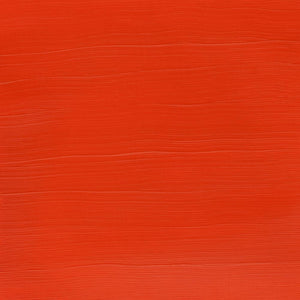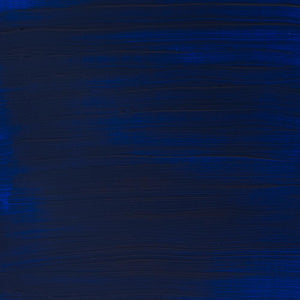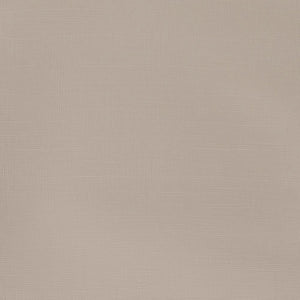
What’s a typical start to your day like?
I start my day with jam on toast and a cup of tea. I always listen to music before beginning a project, usually rap or R&B. I find the lyrics really motivating.
What do you believe is important when it comes to creating art?
You have to love your own work before you can expect other people to like it.

What is your philosophy on colour and public spaces?
I believe colour is joyful, and I love seeing it in public spaces, which are often quite grey. In today’s world, we’re constantly distracted, and our flow through life becomes disjointed. My work aims to put people back into a state of flow. It’s inspired by the fluidity of nature and its powerful effect on our wellbeing.
What’s your creative process like?
I love bright colours and I’m able to develop ideas quickly, right through to the final stage of each project.
When did you start painting, and how did that begin?
I think I first started using paints after the screen-printing phase I had at uni. I remember my mum worked in The Lanes in Brighton, right next to an art shop, and I’d always ask her, “Mum, after your shift, can you get these Winsor & Newton paints for me?”.
Where does your love of colour come from?
My mum has always worn colourful clothes and dresses. My dad loves colour too, so I’ve always been surrounded by it.

What colours do you use and love?
Opera Rose is such a beautiful pink, not quite neon but really vibrant. It’s hard to find paints and inks that bright, so that’s definitely top of the list. I also love Cadmium Orange Hue, Ultramarine, Sap Green, and Pale Umber, which contrasts well with those colours. The paint has a great consistency, so I can move it around the canvas easily.

How has your relationship with colour evolved over time?
It’s definitely developed. When I started, I used a lot of neon, but now my palette has softened. I’ve realised how important it is to pair bright colours with lighter or darker tones to create shadows and contrast. If I only use bright colours it can sometimes be overwhelming or even off-putting in a space.

Why do you scale your artwork up?
I thought to myself, wouldn’t it be great if this print or painting I’ve just made could become large scale and surround someone to make them happy. That’s what colour does. It has such a powerful effect on wellbeing.
Who are some artists that inspire you?
I’ve always looked up to Camille Walala, a London-based mural artist. I saw her large-scale walls in London and around the world and found that really inspiring.

How does being an artist affect your mindset?
I’ve always been a positive person and try to stay grateful for what I have. Being an artist has strengthened that, because the work doesn’t just come to you. It pushes you to work harder, and in turn, helps you appreciate what you already have. It’s a full-circle kind of thing.
What kinds of spaces excite you the most to work with?
If the canvas or space is in poor condition, that excites me most. The transformation is always more impactful.

What is your ultimate goal when creating public art?
The ultimate goal is how people engage with the space. I want it to be interactive and inspiring. It’s so important to have art in public spaces.
Do you feel public art is valued enough?
I think many people, especially councils in the UK, are still reluctant to commission artwork because they don’t always see its value.
Can you tell us about a recent project that had an impact?
A recent project I worked on was redesigning a playground for a primary school. Seeing the difference it made to the children’s lunch breaks and daily lives was incredible. All it took was colour. When they returned from half term and saw all the vibrant, interactive elements, it really lifted their mood.
Have you heard any feedback from that project?
One parent told the Headteacher that their child, who used to feel lonely at lunch, is now happier. Even without someone to play with, they’ve got shapes to jump on and run around. It’s made a big difference.
What is your view on the role of public art?
Public art is a simple concept, but it’s vital. Even something as basic as a bench can be important. Sometimes you just need to sit down and rest. I see public art as functional as well as aesthetic.







![W&N BLACK FINELINER LS 0.1 [CAP ON]](http://uk.winsornewton.com/cdn/shop/files/64128.jpg?crop=center&v=1736866967&width=20)
![WN COTMAN 8 PC FLORAL POCKET BOX [OPEN WITH STICKER] 884955081129](http://uk.winsornewton.com/cdn/shop/files/132624.jpg?crop=center&v=1761839596&width=20)
![W&N COTMAN WATERCOLOUR 8HP FLORAL POCKET SET [FRONT]](http://uk.winsornewton.com/cdn/shop/files/97499.jpg?crop=center&v=1760698026&width=20)

![WN PROMARKER COOL GREY 3 [COMPOSITE] 884955041406](http://uk.winsornewton.com/cdn/shop/files/77586.jpg?crop=center&v=1741263144&width=20)

![W&N SERIES 7 KOLINSKY SABLE BRUSH ROUND [SHORT HANDLE]](http://uk.winsornewton.com/cdn/shop/files/11424.jpg?crop=center&v=1762864605&width=20)
![W&N GALERIA ACRYLIC TUBE 60ML TITAN WHITE 08 [COMPOSITE] 094376914061](http://uk.winsornewton.com/cdn/shop/files/9396.jpg?crop=center&v=1714072593&width=20)
![W&N GALERIA [SWATCH] TITANIUM WHITE](http://uk.winsornewton.com/cdn/shop/files/3097.jpg?crop=center&v=1714072593&width=20)
![W&N GALERIA CARDBOARD SET 10X12ML 884955097809 [OPEN]](http://uk.winsornewton.com/cdn/shop/files/138856.jpg?crop=center&v=1725031476&width=20)
![W&N GALERIA CARDBOARD SET 10X12ML [B014096] 884955097809 [FOP]](http://uk.winsornewton.com/cdn/shop/files/138855.jpg?crop=center&v=1725031475&width=20)